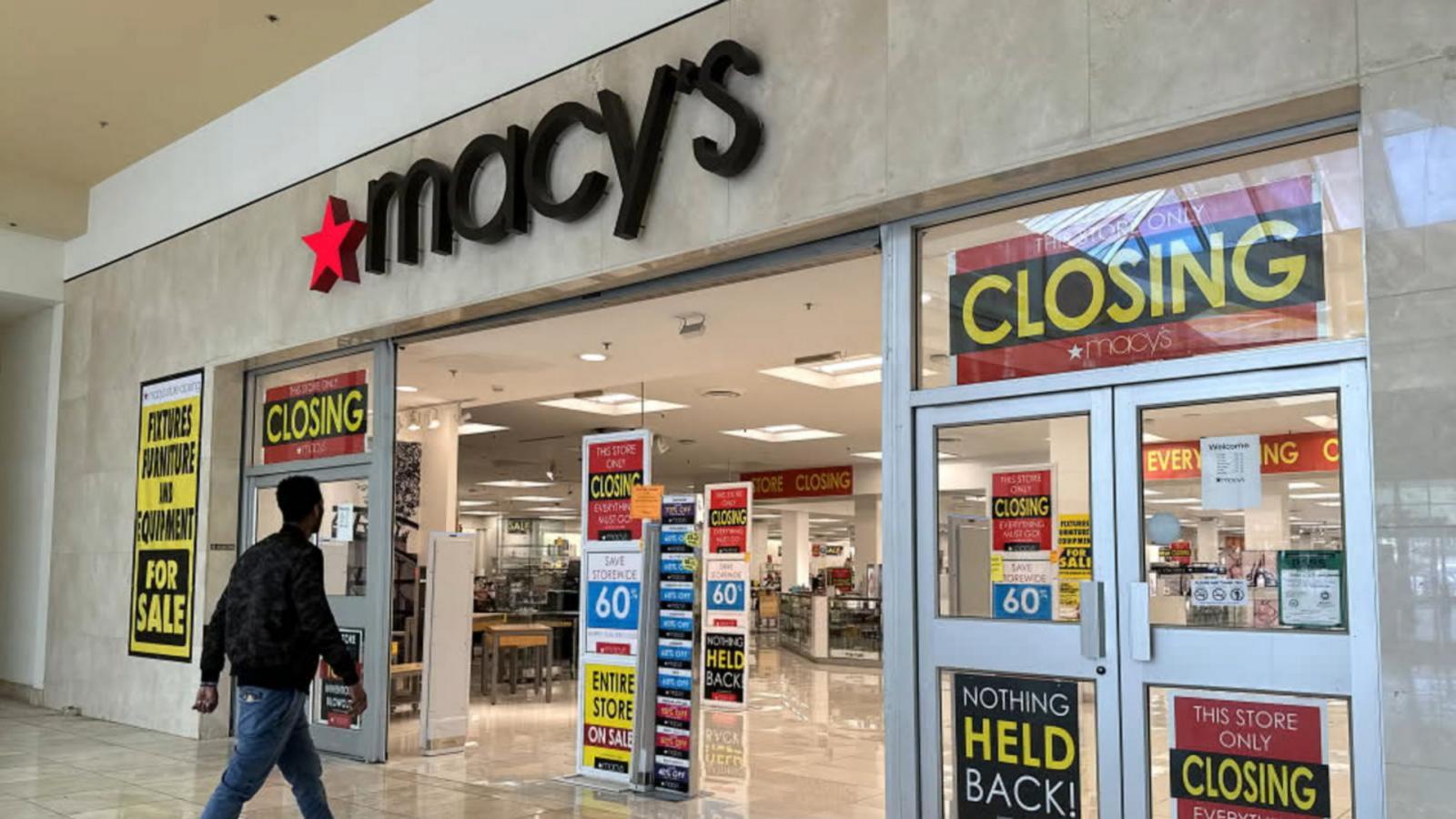Macy's Close 150 Stores, Including San Francisco Flagship
Closing doors do lead to better beginnings. Check out how Macy's close 150 stores in a strategic move signaling a shift towards a more luxurious and adaptive business model.
Author:Darren McphersonReviewer:Dexter CookeFeb 29, 20249.8K Shares265.9K Views

The retail giant with a century-and-a-half legacy, Macy's close 150 storesas it undergoes a transformative journey to address challenges in the ever-evolving retail landscape. The company aims to reposition itself with a "new, smaller, but more luxurious look" to adapt to changing consumer demands.
Downsizing And Luxury Focus - A Bold Move
The core of Macy's transformation involves closing 150 underperforming stores, with 50 slated for closure by the end of 2024 and an additional 100 over the next few years. This strategic move is intended to streamline operations, with the ultimate goal of operating just 350 Macy’s stores by 2026.
Simultaneously, Macy’s will pivot its attention to the success stories within its portfolio—Bloomingdale’s and Bluemercury. These luxury brands have outperformed the flagship Macy’s stores, prompting a strategic shift towards smaller versions of these successful formats.
Navigating A Changing Retail Landscape
The decision to focus on luxury brands aligns with the broader retail trend driven by a changing demographic and economic landscape. As the middle class diminishes, the retail market bifurcates: lower-end stores like Walmart thrive on cost-savings, while luxury brands cater to affluent consumers sustaining higher spending despite increased prices.
Macy’s, acknowledging this shift, aims to attract wealthier shoppers by emphasizing luxury brands and scaling back on full-scale department stores catering primarily to the middle class. Additionally, the company plans to build 30 smaller stores away from traditional malls, responding to a growing consumer preference for more intimate shopping experiences.
Battling Challenges And Activist Investors
The strategic overhaul is a response to the multifaceted challenges confronting Macy’s and the broader department store sector. The rise of e-commerce, the strength of discount chains such as TJ Maxx, and the emergence of online brands have collectively impacted traditional department stores.
Macy's stock price has witnessed a substantial 75% decline since 2015, leading to the closure of nearly 300 stores. Last month, the company announced layoffs affecting approximately 3.5% of its workforce, reflecting the urgency of addressing financial challenges. Activist investors have also played a role, with an unsolicited $6 billion bid rejected, prompting a proxy fight for board control.
Retail analyst Dana Telsey comments on the strategic downsizing, stating, "We believe paring down the Macy’s store base to a more manageable (and profitable) size is prudent given the general structural shift towards online spending and the shift away from department stores."
CEO Tony Spring's Vision For Macy’s
Newly appointed CEO Tony Spring envisions this transformation as a "bold new chapter" for Macy’s. The focus is on enhancing the digital store and offering a more curated selection. Spring emphasizes reinvigorating customer relationships through improved shopping experiences, relevant assortments, and compelling value.
Macy’s commitment to its luxury brands includes plans to open 15 new Bloomingdale’s stores and 30 new Bluemercury locations over the next three years. Remodeling 30 existing Bluemercury stores is also on the agenda, demonstrating a commitment to an upscale retail strategy.
Neil Saunders, an analyst at GlobalData Retail, notes, "The Bloomingdale’s expansion can work as there are several strong luxury markets where the chain is not represented."
Impact On Union Square And Local Sentiments
Macy’s decision to close its flagship Union Square store in San Francisco has stirred emotions and discussions. Mayor London Breed acknowledges the business aspect but also recognizes the deep-rooted significance of Macy’s to the community.
In the words of Mayor Breed, "It’s where families came to shop for the holidays. It’s where many people from my community got their first jobs, or even held jobs for decades. It’s hard to think of Macy’s not being part of our city anymore."
Marisa Rodriguez, CEO of the Union Square Alliance, echoes the sentiments, expressing hope for a solution that allows Macy’s to keep its iconic store open despite acknowledging that the announcement "hurts."
The fate of the Bay Area's 20 other Macy’s locations remains uncertain, but city leaders stress that the closure is not about safety but profitability.
Future Vision And Local Responses
CEO Tony Spring’s commitment to closing non-profitable locations and focusing on smaller, profitable formats echoes Macy’s determination to adapt to a changing retail landscape. The emphasis on customer preferences, with insights from a comprehensive survey of 60,000 customers, underlines a customer-centric approach.
San Francisco politicians are seizing the moment to discuss opportunities for the future of Macy’s Union Square site. Mayor Breed envisions the space as a continued destination that will attract people, while Supervisor Aaron Peskin suggests a mixed-use approach, including a new sound stage for world-class performances.
Historic establishments like John's Grill express sorrow at the potential loss of traditions tied to Macy’s. As the company navigates through these changes, the focus remains on embracing new operators and redefining the downtown area.

Darren Mcpherson
Author
Darren Mcpherson brings over 9 years of experience in politics, business, investing, and banking to his writing. He holds degrees in Economics from Harvard University and Political Science from Stanford University, with certifications in Financial Management.
Renowned for his insightful analyses and strategic awareness, Darren has contributed to reputable publications and served in advisory roles for influential entities.
Outside the boardroom, Darren enjoys playing chess, collecting rare books, attending technology conferences, and mentoring young professionals.
His dedication to excellence and understanding of global finance and governance make him a trusted and authoritative voice in his field.

Dexter Cooke
Reviewer
Dexter Cooke is an economist, marketing strategist, and orthopedic surgeon with over 20 years of experience crafting compelling narratives that resonate worldwide.
He holds a Journalism degree from Columbia University, an Economics background from Yale University, and a medical degree with a postdoctoral fellowship in orthopedic medicine from the Medical University of South Carolina.
Dexter’s insights into media, economics, and marketing shine through his prolific contributions to respected publications and advisory roles for influential organizations.
As an orthopedic surgeon specializing in minimally invasive knee replacement surgery and laparoscopic procedures, Dexter prioritizes patient care above all.
Outside his professional pursuits, Dexter enjoys collecting vintage watches, studying ancient civilizations, learning about astronomy, and participating in charity runs.
Latest Articles
Popular Articles